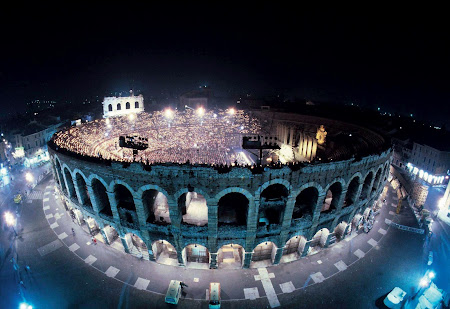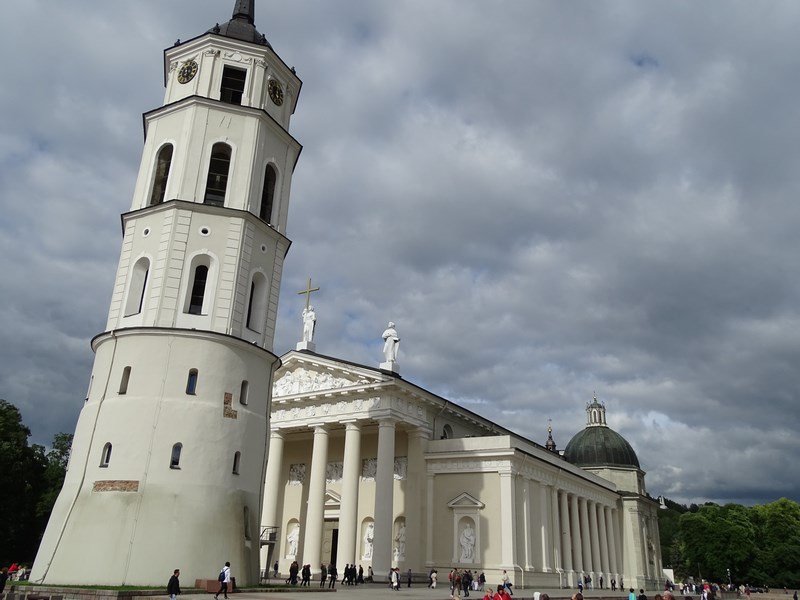Carpatair Destinations: Verona in Love – ” Un cuore da scoprire”. Part 1
Starting today, I will start presenting you some of the destinations operated by Carpatair, a Romanian regional airline with the hub in the wonderful city of Timisoara. We will start with an article about Verona, one of the nicest towns of Northern Italy, better known as the city of Romeo and Juliet, made famous by Will Shakespeare (or whoever was behind him, if we would believe some recent books and movies). I’ve been to Verona twice – in 1994, during my first trip to Italy and in 1997, however Carpatair folks were there even more recently, so, I will publish an excellent article providing tips on what to see… beyond Romeo and Juliet.
Verona, the city in Northern Italy connected to perhaps the most beautiful love story of all times, is a place from where you return full of energy and a zest for life: past, present and future, art, music and spectacular economic development, multicultural blending and understanding between the past and present generations, between local inhabitants and people coming from all over the world…
Maybe the Shakespearian love story hasn’t generated all of Verona’s fame – but it certainly is to blame for a large part of it. Was it true or not? This is not important, as long as beautiful myths and stories fire our imagination. “Tristan and Isolde”, Charlotte Bronte’s “Jane Eyre”, Mircea Eliade’s “Maitreyi” or Lev Tolstoi’s “Ana Karenina” are, just like “Romeo and Juliet”, fantastic stories that – no matter whether they present real facts and individuals or not– fired our imagination. Solidly anchored into our commercial present, we sometimes forget to love with genuine force. Verona sends us an invitation to meditation, limitless love and discovery… and everything becomes simpler, so much simpler than we have ever thought possible.
Pro Domo
The history of Verona started more than 2,000 years ago. The city lies among a range
of smooth hills, at the foot of the Lessini Mountains, on the banks of the Adige River. It is considered the second most important economic center in the Italian region of Veneto.
They say Verona was built on top of an old Etruscan center, with the first tokens of civilization in this area going as far back as the 4th century B.C.
During the reign of the Roman Empire, Verona was a major political and commercial center, as still proven by the Verona Arena, the Roman Theater, the Roman Arch of the Gavi Family, Porta Borsari, the area of archaeological discoveries next to Porta Leoni and many other places we will discover one by one. The majesty of the Roman ruins and the perfect architecture of the magnificent palaces built during the 18th and 19th centuries harmoniously complete each other, in the area dominated by the vestiges of the Della Scala family, in the historical heart of the city. The “city walls” are very interesting and still not very well known; most of them are incredibly well preserved, generating the feeling – or maybe even more than a mere feeling – that Verona is a city that has built its own history. Along the centuries, Verona has created for itself the image of a city preserved just as well as Rome or Florence, the real world heritages and cultures. Numerous institutions such as the Civic Library, the Capitolare Library (with writings going back to the 6th century B. C.), the Filarmonica Accademy (deemed to be the oldest in the whole world), „Arena”, the ancient Academy of Agriculture, Science and Literature, the University and the Conservatory – all these have been keeping for yeas the fast cultural beat of the city. … Today, Verona still attracts visitors from all over the world, for the myth of Romeo and Juliet, for the Opera shows in the Verona Arena, and for the overall beauty of this city, with its cultural and artistic perfection…. However, Verona should\ be discovered going beyond the myths, legends and habits. Once you have reached Verona, you may consideryourself inside the City of Love.
Veronetta – Where It All Began
The part of the city opening on the left bank of the Aidge River took the name of Veronetta in the early 1800s. Napoleon himself gave it this name, thus indicating the area “beyond the Adige”, subordinated to the Austrians after the city was split into two, following the signing of the treaty between the French and the Austrians. Veronetta, this miniature Verona, slowly climbs up on the hills where the San Pietro Castle stands. This is the “cradle” of Verona, the first inhabited core of this city connected with the most beautiful love story of all times…
The Bra Square and the Roman Amphitheatre – The Heart of Verona
Past and present times are harmoniously intertwining in this square considered to be ‘the heart’ of Verona. Welcoming cafes always covered with green sunshades invite tourists to take their snack, lunch or dinner.
The Roman Amphitheater stands majestically standing in the center of this square. Standing 152 meters long, 128 meters wide and 30 meters tall, it was said to have been surpassed only by the Rome Coliseum and the Arles Arenas in France. Completed during the 1st century A.D., the Amphitheater\ has the shape of an oval encompassing no less than 44 rows of pink marble stands. Every summer, between June and August, this well preserved historical area, with exceptional acoustics, becomes the set of the Lyric Festival – a complex string of Opera shows.
The City Gates
They are incredible. A small part of the double walls built by the Romans are currently visible on the Diaz Street, in downtown Verona. Perhaps the most impressive are the so-called ‘public walls’ connecting Castel Vecchio and Ponte Aleardi. Following a catastrophic flooding in 1239, they were rebuilt and have been perfectly preserved. The construction works for these walls were completed by the famous Italian dynasty of Della Scala in January 1325. This was perfectly preserved by Venetians during the 16th century, and then by Austrians during the 19th century, as they turned Verona into one of the four major fortifications of the Quadrilaterus.
The monumental entrance gates, the high compact walls and the fortification systems prove this once was a city that knew how to defend itself.
Sights of Verona
Roman Amphitheater of Verona
Hosting countless classical concerts
like Nabuco
or Tosca
By the Adige river
For a wonderful vista
About Carpatair
Founded in 1999, Carpatair is the largest regional airline in Eastern and South-Eastern Europe. From 2000, Carpatair has developed in Timisoara the most professional HUB in Romania, connecting 7 domestic and 14 international airports. Carpatair operates over 200 flights / week to 21 destinations in 5 countries.



















